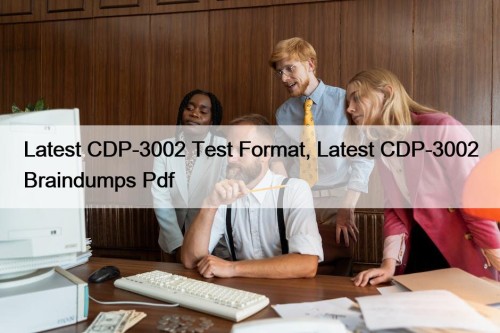Most Popular
 Free PDF Quiz NREMT - Efficient EMT - Emergency Medical Technicians Exam Training Kit
Free PDF Quiz NREMT - Efficient EMT - Emergency Medical Technicians Exam Training Kit
A good job can create the discovery of more spacious ...
 2025 Scaled Agile High-quality SAFe-Agilist Pass4sure Dumps Pdf
2025 Scaled Agile High-quality SAFe-Agilist Pass4sure Dumps Pdf
What's more, part of that 2Pass4sure SAFe-Agilist dumps now are ...
 Latest CDP-3002 Test Format, Latest CDP-3002 Braindumps Pdf
Latest CDP-3002 Test Format, Latest CDP-3002 Braindumps Pdf
It is our company that can provide you with special ...



LEED-AP-BD-C Practice Test: LEED AP Building Design + Construction (LEED AP BD+C) & LEED-AP-BD-C Exam Braindumps

BONUS!!! Download part of Real4Prep LEED-AP-BD-C dumps for free: https://drive.google.com/open?id=1gfXNgbzRCJY9JmfkYKrokgr5Dn8H368y
Our LEED-AP-BD-C exam torrents enjoy both price and brand advantage at the same time. We understand you not only consider the quality of our LEED AP Building Design + Construction (LEED AP BD+C) prepare torrents, but price and after-sales services and support, and other factors as well. So our LEED AP Building Design + Construction (LEED AP BD+C) prepare torrents contain not only the high quality and high accuracy LEED-AP-BD-C Test Braindumps but comprehensive services as well. With the assistance of our LEED-AP-BD-C exam torrents, you will be more distinctive than your fellow workers, because you will learn to make full use of your fragmental time to achieve your goals.
USGBC LEED-AP-BD-C Exam Syllabus Topics:
| Topic | Details |
|---|---|
| Topic 1 |
|
| Topic 2 |
|
| Topic 3 |
|
| Topic 4 |
|
| Topic 5 |
|
>> Latest LEED-AP-BD-C Test Guide <<
Free PDF Pass-Sure USGBC - Latest LEED-AP-BD-C Test Guide
Keep making progress is a very good thing for all people. If you try your best to improve yourself continuously, you will that you will harvest a lot, including money, happiness and a good job and so on. The LEED-AP-BD-C preparation exam from our company will help you keep making progress. Choosing our LEED-AP-BD-C study material, you will find that it will be very easy for you to overcome your shortcomings and become a persistent person. If you decide to buy our LEED-AP-BD-C study questions, you can get the chance that you will pass your LEED-AP-BD-C exam and get the certification successfully in a short time.
USGBC LEED AP Building Design + Construction (LEED AP BD+C) Sample Questions (Q310-Q315):
NEW QUESTION # 310
An office project has the following items in its break room kitchen: a kitchen sink, a residential-style dishwasher, and a coffee machine. How would these items be addressed in Water Efficiency Prerequisite, Indoor Water Use Reduction?
- A. The kitchen sink and dishwasher must be WaterSense labeled and the coffee machine is not included in the prerequisite
- B. The kitchen sink is included in fixture calculations, the dishwasher and coffee machine must be ENERGY STAR® or performance equivalent
- C. The kitchen sink and dishwasher must be WaterSense labeled and the coffee machine should be included in fixture calculations
- D. The kitchen sink is included in fixture calculations, the dishwasher must be ENERGY STAR® or performance equivalent, and the coffee machine is not included in the prerequisite
Answer: D
Explanation:
For the Water Efficiency (WE) Prerequisite: Indoor Water Use Reduction, the kitchen sink is included in fixture calculations as it directly consumes water. The dishwasher must meet ENERGY STAR® standards or equivalent performance requirements to ensure water efficiency, though it is not included in the fixture calculations. The coffee machine, as a minor appliance with minimal water use, is not included in this prerequisite (B). This approach aligns with LEED's focus on larger water-consuming fixtures while ensuring energy and water-efficient appliances where relevant.
NEW QUESTION # 311
Which of the following could be considered diverted construction waste?
- A. Alternative daily cover
- B. Excavated soil
- C. Land-clearing debris
- D. Asphalt with aggregate
Answer: D
Explanation:
According to the LEED v4 Reference Guide for Building Design and Construction, diverted construction waste is defined as "materials that are diverted from disposal in landfills or incineration facilities and are instead reused, recycled, composted, or salvaged"1. Asphalt with aggregate is an example of a material that can be recycled and reused for paving or other applications. Excavated soil and land-clearing debris are excluded from the calculation of the total construction and demolition waste for the MR Credit Building Life- Cycle Impact Reduction1. Alternative daily cover is a material that is used to cover the surface of an active landfill at the end of each day to control odors, pests, and litter. It is not considered as diversion because it does not reduce the amount of waste sent to landfills2. References: MR Credit Building Life-Cycle Impact Reduction, LEED v4 Reference Guide for Building Design and Construction3142
NEW QUESTION # 312
In order to comply with Indoor Environmental Quality Credit, Enhanced Indoor Air Quality Strategies, Option 2.Additional Enhanced IAQ Strategies
- A. CO2 monitors must be fitted in all densely occupied spaces and configured to provide an alert
- B. all outdoor air supply systems must have an airflow measurement device that measures at least 90% of the airflow
- C. all particle filters in the ventilation system must meet Comite Europeen de Normalisation (CEN) standard Class F7 or better
- D. all entrances to the building must have entryway systems 10 ft. (3 m) long in the direction of travel
Answer: C
Explanation:
To comply with the Indoor Environmental Quality Credit, Enhanced Indoor Air Quality Strategies, Option 2, all particle filters in the ventilation system must meet the Comite Europeen de Normalisation (CEN) standard Class F7 or better.This requirement ensures that the air quality inside the building is maintained at a high standard, contributing to the health and well-being of the occupants.References: LEED AP Building Design + Construction (LEED AP BD+C) V4 resources1
NEW QUESTION # 313
Which of the following will contribute to reducing the heat island effect?
- A. Low sloped roof with initial Solar Reflectance Index (SRI) of 64
- B. Intensive vegetated roof
- C. Steep sloped roof with initial SRI of 35
- D. Artificial turf grass
Answer: B
Explanation:
An intensive vegetated roof is a roof that has a thick layer of soil and plants that provide shade, evapotranspiration, and stormwater management. It can reduce the heat island effect by lowering the surface and air temperature of the roof and the surrounding area. Artificial turf grass does not reduce the heat island effect because it is not a living plant and does not provide cooling benefits. A steep sloped roof with initial SRI of 35 does not meet the minimum requirement of 39 for Option 1 or 32 for Option 2 of the Heat Island Reduction credit. A low sloped roof with initial SRI of 64 exceeds the minimum requirement of 82 for Option
1 or 64 for Option 2, but it is not the best option among the choices because it only reflects solar radiation and does not provide other benefits such as shading, evapotranspiration, and stormwater management. References:
* Heat Island Reduction credit in LEED BD+C: New Construction v4.1 - LEED v4.11
* SpecTopics: Heat Island Reduction Credit and LEED V4/V4.12
* LEED Principle: Urban Heat Island Mitigation and Roofing3
NEW QUESTION # 314
A design team pursuing LEED for a new office building project calculated that with the water fixtures specified for the project, a 24% water reduction can be achieved compared to the LEED baseline. What does this mean to the team in terms of pursuing LEED?
- A. The project can meet the Water Efficiency Prerequisite, Indoor Water Use Reduction, but cannot earn any points under Water Efficiency Credit, Indoor Water Use Reduction
- B. The project cannot pursue LEED
- C. The project does not meet Water Efficiency Prerequisite, Indoor Water Use Reduction, but can make up the points elsewhere in the rating system
- D. The project may pursue Water Efficiency Credit, Indoor Water Use Reduction
Answer: D
Explanation:
According to the LEED AP Building Design + Construction (LEED AP BD+C) V4 resources, the Water Efficiency Prerequisite for Indoor Water Use Reduction requires the project to reduce aggregate water consumption by 20% from the baseline. Therefore, the project can meet this prerequisite with a 24% water reduction. However, to earn points under the Water Efficiency Credit for Indoor Water Use Reduction, the project needs to achieve a higher level of water reduction, ranging from 25% to 50%. The credit awards points based on the percentage of water reduction achieved, as shown in Table 1. Thus, the project may pursue this credit if it can further reduce its water consumption by installing more efficient fixtures and fittings, appliances, equipment and processes.
NEW QUESTION # 315
......
We believe that one of the most important things you care about is the quality of our LEED-AP-BD-C exam materials, but we can ensure that the quality of it won’t let you down. Many candidates are interested in our LEED-AP-BD-C exam materials. What you can set your mind at rest is that the LEED-AP-BD-C exam materials are very high quality. LEED-AP-BD-C exam materials draw up team have a strong expert team to constantly provide you with an effective training resource. They continue to use their rich experience and knowledge to study the real exam questions of the past few years, to draw up such an exam materials for you. In other words, you can never worry about the quality of LEED-AP-BD-C Exam Materials, you will not be disappointed.
Latest LEED-AP-BD-C Mock Exam: https://www.real4prep.com/LEED-AP-BD-C-exam.html
- Free PDF Quiz 2025 USGBC LEED-AP-BD-C: High Pass-Rate Latest LEED AP Building Design + Construction (LEED AP BD+C) Test Guide 📎 Immediately open ▷ www.torrentvalid.com ◁ and search for { LEED-AP-BD-C } to obtain a free download 👋LEED-AP-BD-C Test Testking
- Cert LEED-AP-BD-C Guide 🤗 Valid LEED-AP-BD-C Mock Exam 🦎 LEED-AP-BD-C Test Testking ❕ ✔ www.pdfvce.com ️✔️ is best website to obtain ⇛ LEED-AP-BD-C ⇚ for free download 🟣VCE LEED-AP-BD-C Dumps
- New LEED-AP-BD-C Braindumps Ebook 🚌 Interactive LEED-AP-BD-C Questions 🗳 VCE LEED-AP-BD-C Dumps 💓 Enter ☀ www.torrentvalid.com ️☀️ and search for ⮆ LEED-AP-BD-C ⮄ to download for free 🌅Cert LEED-AP-BD-C Guide
- 100% Pass 2025 USGBC Newest Latest LEED-AP-BD-C Test Guide ⬛ Go to website ⮆ www.pdfvce.com ⮄ open and search for ➥ LEED-AP-BD-C 🡄 to download for free 😴LEED-AP-BD-C Exam Questions And Answers
- LEED-AP-BD-C Frequent Updates 📜 Cert LEED-AP-BD-C Guide 🦰 Clearer LEED-AP-BD-C Explanation ➖ Go to website 「 www.prep4away.com 」 open and search for 【 LEED-AP-BD-C 】 to download for free 🍤Valid LEED-AP-BD-C Mock Exam
- 100% Pass Quiz 2025 USGBC LEED-AP-BD-C: LEED AP Building Design + Construction (LEED AP BD+C) – High Pass-Rate Latest Test Guide 🤟 Simply search for ➽ LEED-AP-BD-C 🢪 for free download on 【 www.pdfvce.com 】 👡LEED-AP-BD-C Free Dumps
- 100% Pass 2025 Accurate LEED-AP-BD-C: Latest LEED AP Building Design + Construction (LEED AP BD+C) Test Guide 🍼 Easily obtain ( LEED-AP-BD-C ) for free download through 【 www.testsimulate.com 】 🧵Authorized LEED-AP-BD-C Exam Dumps
- 100% Pass Quiz 2025 USGBC LEED-AP-BD-C: LEED AP Building Design + Construction (LEED AP BD+C) – High Pass-Rate Latest Test Guide 🪕 Copy URL 《 www.pdfvce.com 》 open and search for 【 LEED-AP-BD-C 】 to download for free 🤴VCE LEED-AP-BD-C Dumps
- Valid LEED-AP-BD-C Mock Exam 🌆 LEED-AP-BD-C Exam Questions And Answers 🔪 Latest LEED-AP-BD-C Dumps Questions 😀 Search for 《 LEED-AP-BD-C 》 and download it for free immediately on ➥ www.testsimulate.com 🡄 🌗Interactive LEED-AP-BD-C Questions
- 100% Pass Quiz 2025 USGBC LEED-AP-BD-C: LEED AP Building Design + Construction (LEED AP BD+C) – High Pass-Rate Latest Test Guide 🥒 Download ➽ LEED-AP-BD-C 🢪 for free by simply entering ▶ www.pdfvce.com ◀ website 😳LEED-AP-BD-C Test King
- 100% Pass Quiz 2025 USGBC LEED-AP-BD-C: LEED AP Building Design + Construction (LEED AP BD+C) – High Pass-Rate Latest Test Guide 😩 Go to website ➥ www.getvalidtest.com 🡄 open and search for ➽ LEED-AP-BD-C 🢪 to download for free 👈Latest LEED-AP-BD-C Exam Labs
- LEED-AP-BD-C Exam Questions
- techwitsclan.com www.gpzj.net kevindomingueztadeo.com oshaim.com vincead319.goabroadblog.com class.dtechnologys.com daedaluscs.pro tt.startwithrakib.com startuphub.thinktankenterprise.com sudacad.net
BTW, DOWNLOAD part of Real4Prep LEED-AP-BD-C dumps from Cloud Storage: https://drive.google.com/open?id=1gfXNgbzRCJY9JmfkYKrokgr5Dn8H368y
Tags: Latest LEED-AP-BD-C Test Guide, Latest LEED-AP-BD-C Mock Exam, Detailed LEED-AP-BD-C Answers, Valid LEED-AP-BD-C Guide Files, LEED-AP-BD-C 100% Correct Answers